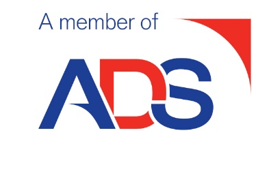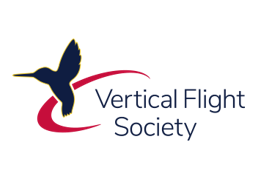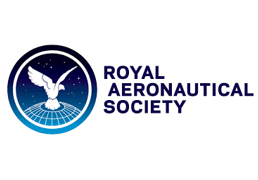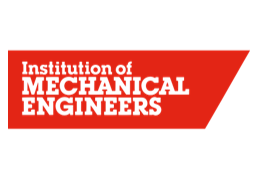My Career (So far)
I consider myself to have been extremely fortunate to have lived through a time of rapid and amazing advances in the world of aerospace
- from Concorde and the moon landings during the '60s, through the technological advances in the '80s and '90s that were made possible by
the widespread adoption of CAD/CAM and CFD, to the modern era of environmentally-aware aviation. We are potentially now living at the cusp
of yet another huge expansion in innovative potential within the aviation field - one that has largely been brought about by recent technical
developments such as electric distributed propulsion and cheap, powerful onboard computers.
My early ambitions to become an aircraft designer were brought to fruition in the late 1980s as a young engineer at Atlas Aircraft Corporation in Kempton Park, South Africa, working on the aerodynamics of advanced rotor blades for the Rooivalk attack helicopter - and subsequently in the South African Air Force helping to support various joint projects between the burgeoning South African aviation industry and the various users of its technology.
The '90s were the early years of CFD analysis, and new computational techniques for modelling fluid flows were literally being applied as fast as they could be invented (and the limited computational capacity of the time allowed). This new ability to use computers to explore the physical world in unprecedented detail exposed many gaps and flaws in our fundamental understanding of the way aerodynamics really worked, and at the same time hinted at a fundamental mathematical beauty that lurked just beneath the surface of our understanding. A deep curiosity regarding the mathematical underpinnings of aerodynamic theory was a strong draw into the academic world, and I left industry to join the Department of Aeronautics at the University of the Witwatersrand in January 1993.
This was the beginning of a long academic career, via the University of Glasgow and Imperial College London, returning to Glasgow in 2006 as a full professor to fill the prestigious Mechan Chair of Aerodynamics and Fluid Dynamics. In 2016 I ended my academic career as Director of the Centre for Future Air-Space Transportation Technology at the University of Strathclyde.
In my academic career I always strove to bridge the gap between mathematical theory and practical application, and in doing so kept very strong links with colleagues in industry around the world. Their influence and inspiration is clearly evident in the many papers and reports in which we documented and recorded our findings and discoveries. In all of this I was supported by a very able and enthusiastic group of PhD students and young researchers. All these individuals have gone on to achieve great things in the world, and I am exceptionally proud of every one of them.
Since 2015, I have directed Sophrodyne Aerospace, a company set up specifically to distil these three decades of experience - with the express purpose of providing a vehicle through which I could provide high-quality, independent and responsive technical input and advice to the aerospace community.
The page below tells the story of my career in a little more detail.
My early ambitions to become an aircraft designer were brought to fruition in the late 1980s as a young engineer at Atlas Aircraft Corporation in Kempton Park, South Africa, working on the aerodynamics of advanced rotor blades for the Rooivalk attack helicopter - and subsequently in the South African Air Force helping to support various joint projects between the burgeoning South African aviation industry and the various users of its technology.
The '90s were the early years of CFD analysis, and new computational techniques for modelling fluid flows were literally being applied as fast as they could be invented (and the limited computational capacity of the time allowed). This new ability to use computers to explore the physical world in unprecedented detail exposed many gaps and flaws in our fundamental understanding of the way aerodynamics really worked, and at the same time hinted at a fundamental mathematical beauty that lurked just beneath the surface of our understanding. A deep curiosity regarding the mathematical underpinnings of aerodynamic theory was a strong draw into the academic world, and I left industry to join the Department of Aeronautics at the University of the Witwatersrand in January 1993.
This was the beginning of a long academic career, via the University of Glasgow and Imperial College London, returning to Glasgow in 2006 as a full professor to fill the prestigious Mechan Chair of Aerodynamics and Fluid Dynamics. In 2016 I ended my academic career as Director of the Centre for Future Air-Space Transportation Technology at the University of Strathclyde.
In my academic career I always strove to bridge the gap between mathematical theory and practical application, and in doing so kept very strong links with colleagues in industry around the world. Their influence and inspiration is clearly evident in the many papers and reports in which we documented and recorded our findings and discoveries. In all of this I was supported by a very able and enthusiastic group of PhD students and young researchers. All these individuals have gone on to achieve great things in the world, and I am exceptionally proud of every one of them.
Since 2015, I have directed Sophrodyne Aerospace, a company set up specifically to distil these three decades of experience - with the express purpose of providing a vehicle through which I could provide high-quality, independent and responsive technical input and advice to the aerospace community.
The page below tells the story of my career in a little more detail.
Sophrodyne Aerospace
2016 – Present
Chief Technical Officer and Director.
It quickly became apparent that starting my own company would provide me with the ideal vehicle through which I could continue to provide independent, high-quality and responsive technical input and advice to the aeronautical community.
Sophrodyne was registered as a new Scottish company in September 2015 - with my wife, a highly-competent computer scientist in her own right, as co-director.
Whilst running your own company is not for the faint-hearted, I have not looked back since! Working for my own company has allowed me the freedom to expand and develop many concepts and ideas that remained unexplored or under-developed while in Academia. Indeed, Sophrodyne Aerospace has provided me with the opportunity to crystallize my learnings and to bring these to a new audience.
Over the last years we have engaged in a number of interesting and diverse projects at the boundary between aerospace engineering and mathematical physics. In doing so we have developed a comprehensive set of methodologies and techniques for the analysis and understanding of flight vehicles - from hypersonic re-entry vehicles to subsonic drones, to helicopters, eVTOL and airships. We specialise in providing deep design insights, generated from simple, flexible and transparent models but supported by some of the most advanced computational techniques available. We have provided hours of online tuition and support, allowing companies and individuals to develop the skills, confidence and scientific attitudes required to enable a safer and better-designed future of aviation than would otherwise be the case.
As aerospace enters a new golden age, we have worked with a fascinating range of interesting people and companies, helping them to establish confidence in their product and to explore the practical viability of new ideas and concepts. It has been my pleasure to have fostered an open, responsive and technically-rigorous relationship with all our clients to date, and we pride ourselves in always being amenable to new and interesting challenges.
It quickly became apparent that starting my own company would provide me with the ideal vehicle through which I could continue to provide independent, high-quality and responsive technical input and advice to the aeronautical community.
Sophrodyne was registered as a new Scottish company in September 2015 - with my wife, a highly-competent computer scientist in her own right, as co-director.
Whilst running your own company is not for the faint-hearted, I have not looked back since! Working for my own company has allowed me the freedom to expand and develop many concepts and ideas that remained unexplored or under-developed while in Academia. Indeed, Sophrodyne Aerospace has provided me with the opportunity to crystallize my learnings and to bring these to a new audience.
Over the last years we have engaged in a number of interesting and diverse projects at the boundary between aerospace engineering and mathematical physics. In doing so we have developed a comprehensive set of methodologies and techniques for the analysis and understanding of flight vehicles - from hypersonic re-entry vehicles to subsonic drones, to helicopters, eVTOL and airships. We specialise in providing deep design insights, generated from simple, flexible and transparent models but supported by some of the most advanced computational techniques available. We have provided hours of online tuition and support, allowing companies and individuals to develop the skills, confidence and scientific attitudes required to enable a safer and better-designed future of aviation than would otherwise be the case.
As aerospace enters a new golden age, we have worked with a fascinating range of interesting people and companies, helping them to establish confidence in their product and to explore the practical viability of new ideas and concepts. It has been my pleasure to have fostered an open, responsive and technically-rigorous relationship with all our clients to date, and we pride ourselves in always being amenable to new and interesting challenges.

University of Strathclyde, Glasgow
2010 – 2016
Professor of Computational Aerodynamics,
John Anderson Fellow, Deputy Head of Department, and Director, Centre for Future Air-Space Transportation Systems.
New challenges beckoned, however, and prompted a move across town to lead a new centre that was designed from the outset to be at the very forefront of aerospace engineering. At Strathclyde, I directed a group of fifteen academics and research students working to develop the numerical techniques necessary to model and understand the dynamics and performance of the next generation of advanced, re-usable spacecraft and high-speed airliners that were starting to be seen as viable alternatives to the current fleet of airliners and expendable rockets.
Our Hyflow and HyPro software suites, supported by advanced CFD and Direct Simulation Monte-Carlo (DSMC) analysis, were able to model the aerodynamics, heat transfer, flight dynamics and trajectory of vehicles operating in the hypersonic flight regime, and to optimise the characteristics of their propulsion systems for best performance. As such we were able to contribute to a number of influential initiatives around the world that are paving the way towards a new generation of aircraft and spacecraft in which traditional measures such as speed and capacity are very carefully balanced against more modern concerns such as fuel economy and environmental impact. Through our efforts we thus played a part in helping the aviation industry to adapt to a future world that is likely to be very different to that which we presently are used to.
A very important part of the job was to present our work to a broader audience, and through a range of public presentations and lectures I relished the opportunity to educate old and young regarding the wonders that the future of aviation might bring. I was very fortunate to have played a prominent role in setting up and running the UK Hypersonics Alliance, an organisation whose purpose was to stimulate and support hypersonics-related activities across UK academia. Extensive engagement with the American Institute of Aeronautics and Astronautics eventually led to us hosting the 20th AIAA International Space Planes and Hypersonic Systems and Technologies Conference in Glasgow in July 2015, where a highlight was seeing researchers from the far corners of the world all gathered in one room discussing their future research plans over traditional Scottish haggis, neeps and tatties. Indeed, the Centre established strong links with researchers from the USA, the EU and Australia, and we hosted researchers from all these parts of the world at one time or another in our laboratory.
By the mid 'twenty-teens' however, the crystallization of a long and insidious change of focus over the years in UK universities - towards what can only be described as very transactional view of the world in which research and teaching are conducted more to meet arbitrarily-set quotas than for their own intrinsic value - had taken a bit of a shine off the idea of continuing my career in Academia. I began to search for a way to continue to provide original, clear, and above all useful, research insights, as well as to carry on educating, motivating and informing those like me who were fascinated by the mathematical foundations of aeronautical engineering.
John Anderson Fellow, Deputy Head of Department, and Director, Centre for Future Air-Space Transportation Systems.
New challenges beckoned, however, and prompted a move across town to lead a new centre that was designed from the outset to be at the very forefront of aerospace engineering. At Strathclyde, I directed a group of fifteen academics and research students working to develop the numerical techniques necessary to model and understand the dynamics and performance of the next generation of advanced, re-usable spacecraft and high-speed airliners that were starting to be seen as viable alternatives to the current fleet of airliners and expendable rockets.
Our Hyflow and HyPro software suites, supported by advanced CFD and Direct Simulation Monte-Carlo (DSMC) analysis, were able to model the aerodynamics, heat transfer, flight dynamics and trajectory of vehicles operating in the hypersonic flight regime, and to optimise the characteristics of their propulsion systems for best performance. As such we were able to contribute to a number of influential initiatives around the world that are paving the way towards a new generation of aircraft and spacecraft in which traditional measures such as speed and capacity are very carefully balanced against more modern concerns such as fuel economy and environmental impact. Through our efforts we thus played a part in helping the aviation industry to adapt to a future world that is likely to be very different to that which we presently are used to.
A very important part of the job was to present our work to a broader audience, and through a range of public presentations and lectures I relished the opportunity to educate old and young regarding the wonders that the future of aviation might bring. I was very fortunate to have played a prominent role in setting up and running the UK Hypersonics Alliance, an organisation whose purpose was to stimulate and support hypersonics-related activities across UK academia. Extensive engagement with the American Institute of Aeronautics and Astronautics eventually led to us hosting the 20th AIAA International Space Planes and Hypersonic Systems and Technologies Conference in Glasgow in July 2015, where a highlight was seeing researchers from the far corners of the world all gathered in one room discussing their future research plans over traditional Scottish haggis, neeps and tatties. Indeed, the Centre established strong links with researchers from the USA, the EU and Australia, and we hosted researchers from all these parts of the world at one time or another in our laboratory.
By the mid 'twenty-teens' however, the crystallization of a long and insidious change of focus over the years in UK universities - towards what can only be described as very transactional view of the world in which research and teaching are conducted more to meet arbitrarily-set quotas than for their own intrinsic value - had taken a bit of a shine off the idea of continuing my career in Academia. I began to search for a way to continue to provide original, clear, and above all useful, research insights, as well as to carry on educating, motivating and informing those like me who were fascinated by the mathematical foundations of aeronautical engineering.
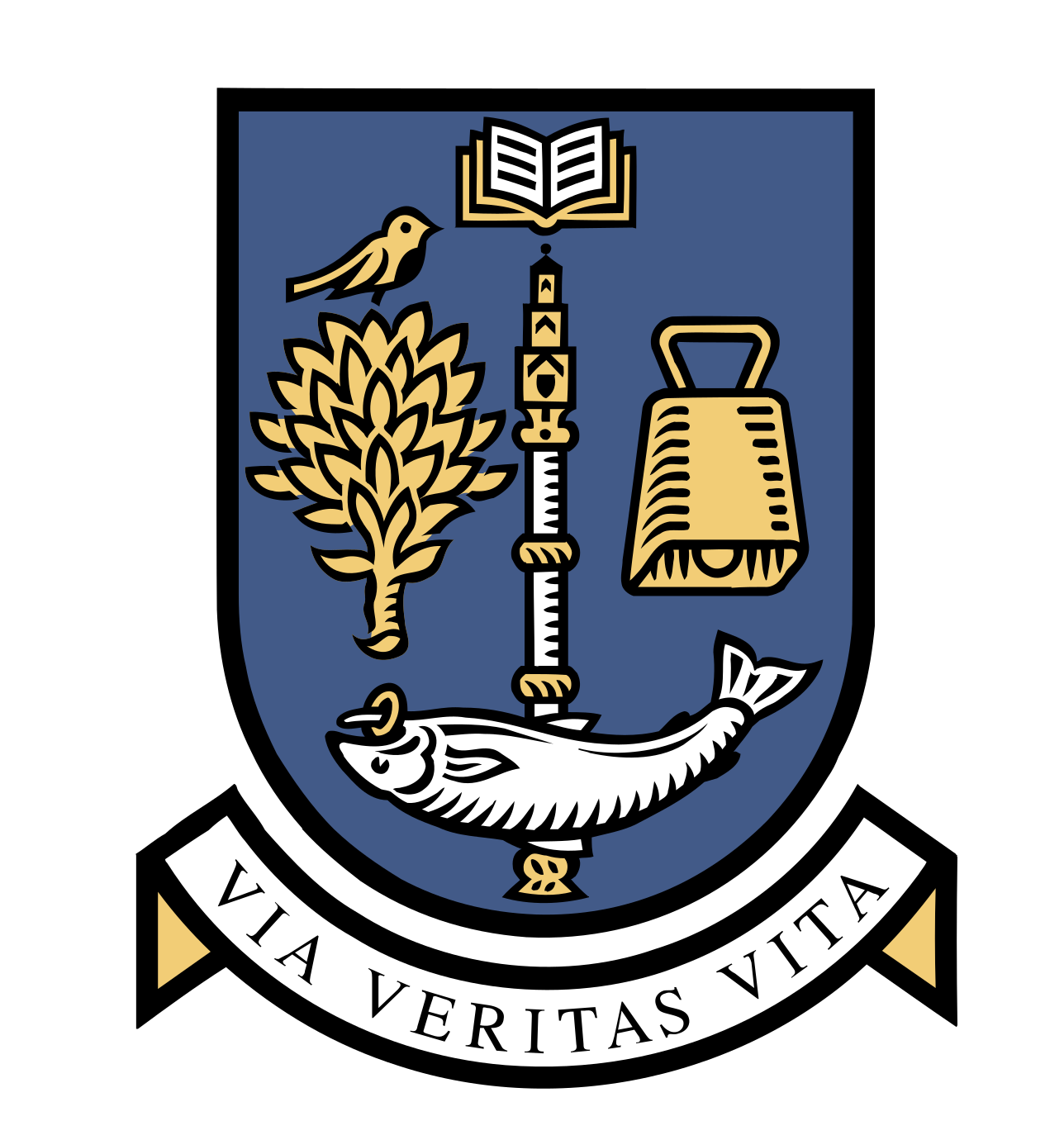
University of Glasgow
2006 – 2010
Mechan Chair of Aerodynamics and Fluid Mechanics,
Deputy Head of Department, and Director, Glasgow Rotorcraft Laboratory.
2006 marked a move back to Glasgow, following in the footsteps of luminaries such as W.J. Duncan (of aeroelasticity fame), Terence Nonweiler (the inventor of the hypersonic waverider), and Bryan Richards (of hypersonics and CFD renown) as the Mechan Chair of Aerodynamics and Fluid Dynamics.
A highly rewarding few years was spent directing a very capable group of PhD students and post-docs in extending the capability of the VTM and turning it from being simply a calculating tool into being more a broad computational repository of our accumulated knowledge of the aerodynamics of helicopters. The model grew to encapsulate insights in a range of domains of practical interest, including the coupled rotor-fuselage dynamics associated with pathological flight conditions such as pitch-up and tailshake (Tim Fletcher and Adam Kenyon), rotor vibration - particularly at high forward flight speed (Sebastién Mounoury), high-frequency airloads and acoustics - especially those associated with blade-vortex interactions (Mary Kelly), the coupled physics of particulate-air mixtures, as encountered during the so-called "brownout" that helicopters can experience when operating in deserts (Catriona Phillips), and the aerodynamics and acoustics of advanced compound helicopters such as the Sikorsky X-2 where the compactness of the aircraft's configuration yields a number of significant design challenges (Hyo Won Kim).
In 2009-10 a specialised, new version of the VTM was written to model the performance of Horizontal Axis Wind Turbines and their aerodynamic interactions within wind farms (Tim Fletcher), Vertical Axis Wind Turbines and the particular problems associated with the extreme unsteadiness of their aerodynamics (Frank Scheurich), and Undersea Tidal Turbines - where scouring and sediment uplift from the seabed are particular concerns (Lada Vybulkova).
The Rotorcraft Laboratory gained an international reputation for the quality of its work, leading to several joint projects with international collaborators and the award of several prestigious academic prizes.
Deputy Head of Department, and Director, Glasgow Rotorcraft Laboratory.
2006 marked a move back to Glasgow, following in the footsteps of luminaries such as W.J. Duncan (of aeroelasticity fame), Terence Nonweiler (the inventor of the hypersonic waverider), and Bryan Richards (of hypersonics and CFD renown) as the Mechan Chair of Aerodynamics and Fluid Dynamics.
A highly rewarding few years was spent directing a very capable group of PhD students and post-docs in extending the capability of the VTM and turning it from being simply a calculating tool into being more a broad computational repository of our accumulated knowledge of the aerodynamics of helicopters. The model grew to encapsulate insights in a range of domains of practical interest, including the coupled rotor-fuselage dynamics associated with pathological flight conditions such as pitch-up and tailshake (Tim Fletcher and Adam Kenyon), rotor vibration - particularly at high forward flight speed (Sebastién Mounoury), high-frequency airloads and acoustics - especially those associated with blade-vortex interactions (Mary Kelly), the coupled physics of particulate-air mixtures, as encountered during the so-called "brownout" that helicopters can experience when operating in deserts (Catriona Phillips), and the aerodynamics and acoustics of advanced compound helicopters such as the Sikorsky X-2 where the compactness of the aircraft's configuration yields a number of significant design challenges (Hyo Won Kim).
In 2009-10 a specialised, new version of the VTM was written to model the performance of Horizontal Axis Wind Turbines and their aerodynamic interactions within wind farms (Tim Fletcher), Vertical Axis Wind Turbines and the particular problems associated with the extreme unsteadiness of their aerodynamics (Frank Scheurich), and Undersea Tidal Turbines - where scouring and sediment uplift from the seabed are particular concerns (Lada Vybulkova).
The Rotorcraft Laboratory gained an international reputation for the quality of its work, leading to several joint projects with international collaborators and the award of several prestigious academic prizes.
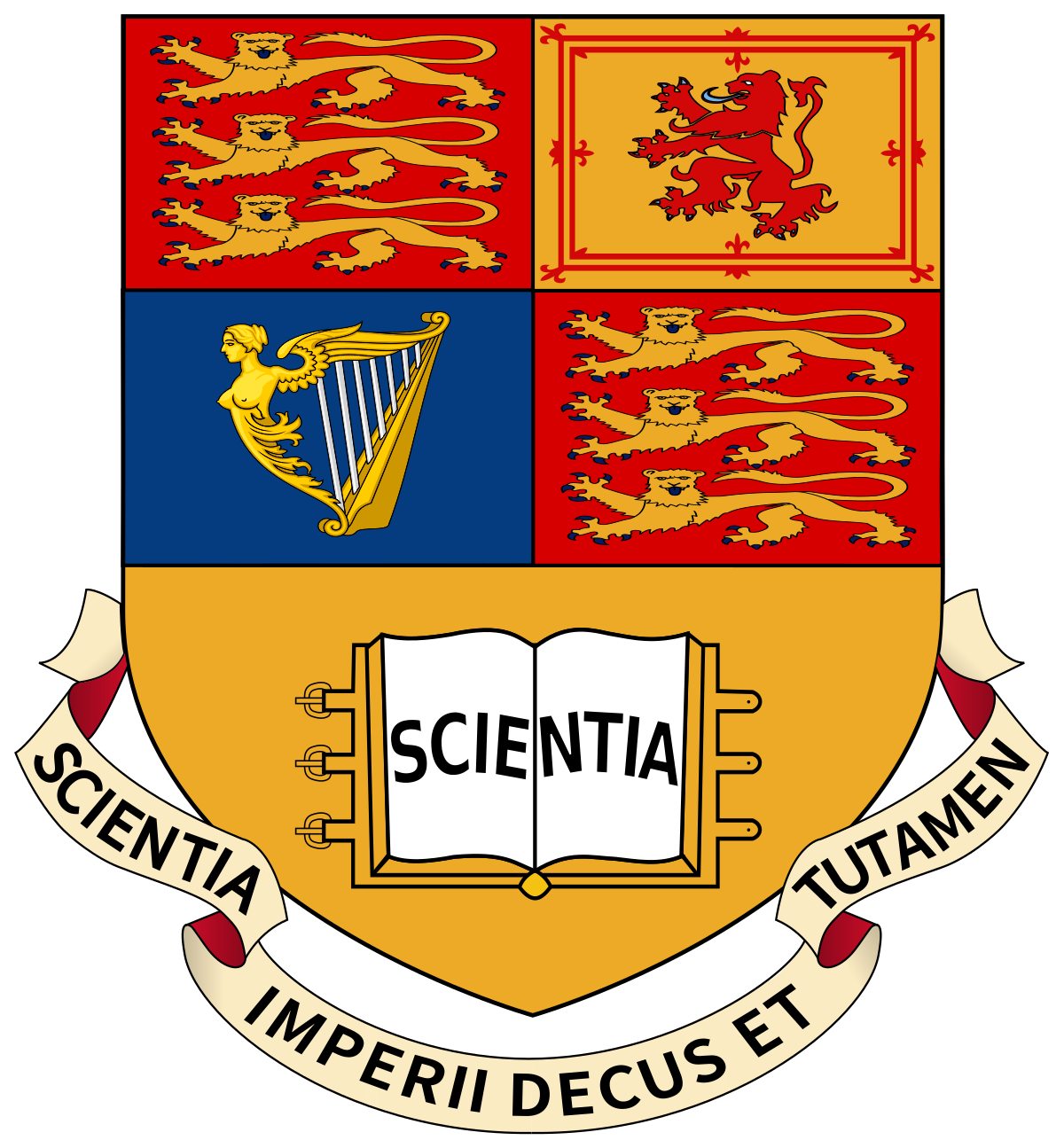
Imperial College London
1999 – 2006
Senior Lecturer in Aerodynamics and Flight Mechanics, Chancellor's Fellow.
1999 brought with it a move from Glasgow to a permanent academic position at Imperial College in London as Chancellor's Fellow in the world-renowned Department of Aeronautics - located across the road from the Science Museum in South Kensington.
With the help of two very capable PhD students, Glen Whitehouse and Andrew Line, the VTM was developed into an efficient new helicopter aerodynamic model. The fundamental insight was that a method that had been used traditionally to solve compressible gas-flow problems could be used to create very accurate and compact simulations of the dynamics of the helicopter if the Navier-Stokes equations governing its aerodynamics were re-cast from the usual pressure-velocity form into vorticity-velocity form.
A major early application of the VTM was to understand the inception and development of a rotor wake instability, called the Vortex Ring State, that was then causing serious problems during the development of the V-22 Osprey - a tilt-rotor aircraft with particularly heavily-loaded rotors. Together with PhD student Gary Ahlin, and in collaboration with John Perry, ex Westlands Helicopters, Simon Newman at Southampton University, and Gordon Leishman at the University of Maryland, we identified the range of flight conditions that would lead to the onset of the VRS and established the origins of the phenomenon in an even more fundamental instability within the rotor wake.
As a young academic at Imperial they expected you to take on a very heavy teaching load, and I ended up with responsibility for delivering courses in flight mechanics, aircraft performance, systems engineering and helicopter aerodynamics as well as contributing to a course in aircraft design. My geometric approach to flight dynamics teaching was further developed and tested on students to good effect, as was a similar course in helicopter rotor aerodynamics - where the students were understandably a little distressed by the turgidity of some of the governing equations in the standard approach to the subject matter. I would like to think that the sizeable number of students in my class was more a consequence of my teaching style than of the fact that the only alternative to my course was Christos Vassilicos's set of lectures on the fundamental theories of turbulence!
I was also very pleased to be given some outward-facing roles, and for several years was the departmental careers advisor, a member of its industrial liaison committee, College representative on a couple of pan-European university alliances, and organiser of the weekly aerodynamics seminars - all very useful positions for a young academic to have when trying to establish their presence in a new country.
1999 brought with it a move from Glasgow to a permanent academic position at Imperial College in London as Chancellor's Fellow in the world-renowned Department of Aeronautics - located across the road from the Science Museum in South Kensington.
With the help of two very capable PhD students, Glen Whitehouse and Andrew Line, the VTM was developed into an efficient new helicopter aerodynamic model. The fundamental insight was that a method that had been used traditionally to solve compressible gas-flow problems could be used to create very accurate and compact simulations of the dynamics of the helicopter if the Navier-Stokes equations governing its aerodynamics were re-cast from the usual pressure-velocity form into vorticity-velocity form.
A major early application of the VTM was to understand the inception and development of a rotor wake instability, called the Vortex Ring State, that was then causing serious problems during the development of the V-22 Osprey - a tilt-rotor aircraft with particularly heavily-loaded rotors. Together with PhD student Gary Ahlin, and in collaboration with John Perry, ex Westlands Helicopters, Simon Newman at Southampton University, and Gordon Leishman at the University of Maryland, we identified the range of flight conditions that would lead to the onset of the VRS and established the origins of the phenomenon in an even more fundamental instability within the rotor wake.
As a young academic at Imperial they expected you to take on a very heavy teaching load, and I ended up with responsibility for delivering courses in flight mechanics, aircraft performance, systems engineering and helicopter aerodynamics as well as contributing to a course in aircraft design. My geometric approach to flight dynamics teaching was further developed and tested on students to good effect, as was a similar course in helicopter rotor aerodynamics - where the students were understandably a little distressed by the turgidity of some of the governing equations in the standard approach to the subject matter. I would like to think that the sizeable number of students in my class was more a consequence of my teaching style than of the fact that the only alternative to my course was Christos Vassilicos's set of lectures on the fundamental theories of turbulence!
I was also very pleased to be given some outward-facing roles, and for several years was the departmental careers advisor, a member of its industrial liaison committee, College representative on a couple of pan-European university alliances, and organiser of the weekly aerodynamics seminars - all very useful positions for a young academic to have when trying to establish their presence in a new country.

Glasgow University
1997 – 1999
Research Associate.
Very soon I found myself in Glasgow, Scotland, having joined the very strong rotorcraft group at Glasgow University - after answering a particularly enticing advert in the Times Higher Education Supplement looking for a researcher interested in tackling tough mathematical problems in rotorcraft flight mechanics.
Helicopter flight mechanics in the late 1990s was beset by a problem whereby existing dynamic models predicted a fundamentally incorrect dynamic response of the rotor to cyclic control inputs. With EPSRC funding I built a new CFD-based aerodynamic model for helicopter rotors (eventually to be called the Vorticity Transport Model, or VTM for short) that could be coupled to Glasgow University's RASCAL model for the coupled flap-lag-feather dynamics of the individual rotor blades and 6-degree of freedom motions of the helicopter fuselage.
We showed that modelling accurately the time-lag associated with the convection of the rotor wake following a change in loading on the blades is fundamental to the successful prediction of the flight dynamic behaviour of any rotorcraft, and in doing so helped to inform modelling efforts elsewhere to improve the quality and accuracy with which helicopter flight dynamic behaviour could be simulated.
Working at Glasgow was a very good introduction to the UK's academic community, and my work on the computational aspects of rotorcraft aerodynamic modelling attracted significant interest. Very soon the opportunity to take up a more permanent position arose.
Very soon I found myself in Glasgow, Scotland, having joined the very strong rotorcraft group at Glasgow University - after answering a particularly enticing advert in the Times Higher Education Supplement looking for a researcher interested in tackling tough mathematical problems in rotorcraft flight mechanics.
Helicopter flight mechanics in the late 1990s was beset by a problem whereby existing dynamic models predicted a fundamentally incorrect dynamic response of the rotor to cyclic control inputs. With EPSRC funding I built a new CFD-based aerodynamic model for helicopter rotors (eventually to be called the Vorticity Transport Model, or VTM for short) that could be coupled to Glasgow University's RASCAL model for the coupled flap-lag-feather dynamics of the individual rotor blades and 6-degree of freedom motions of the helicopter fuselage.
We showed that modelling accurately the time-lag associated with the convection of the rotor wake following a change in loading on the blades is fundamental to the successful prediction of the flight dynamic behaviour of any rotorcraft, and in doing so helped to inform modelling efforts elsewhere to improve the quality and accuracy with which helicopter flight dynamic behaviour could be simulated.
Working at Glasgow was a very good introduction to the UK's academic community, and my work on the computational aspects of rotorcraft aerodynamic modelling attracted significant interest. Very soon the opportunity to take up a more permanent position arose.
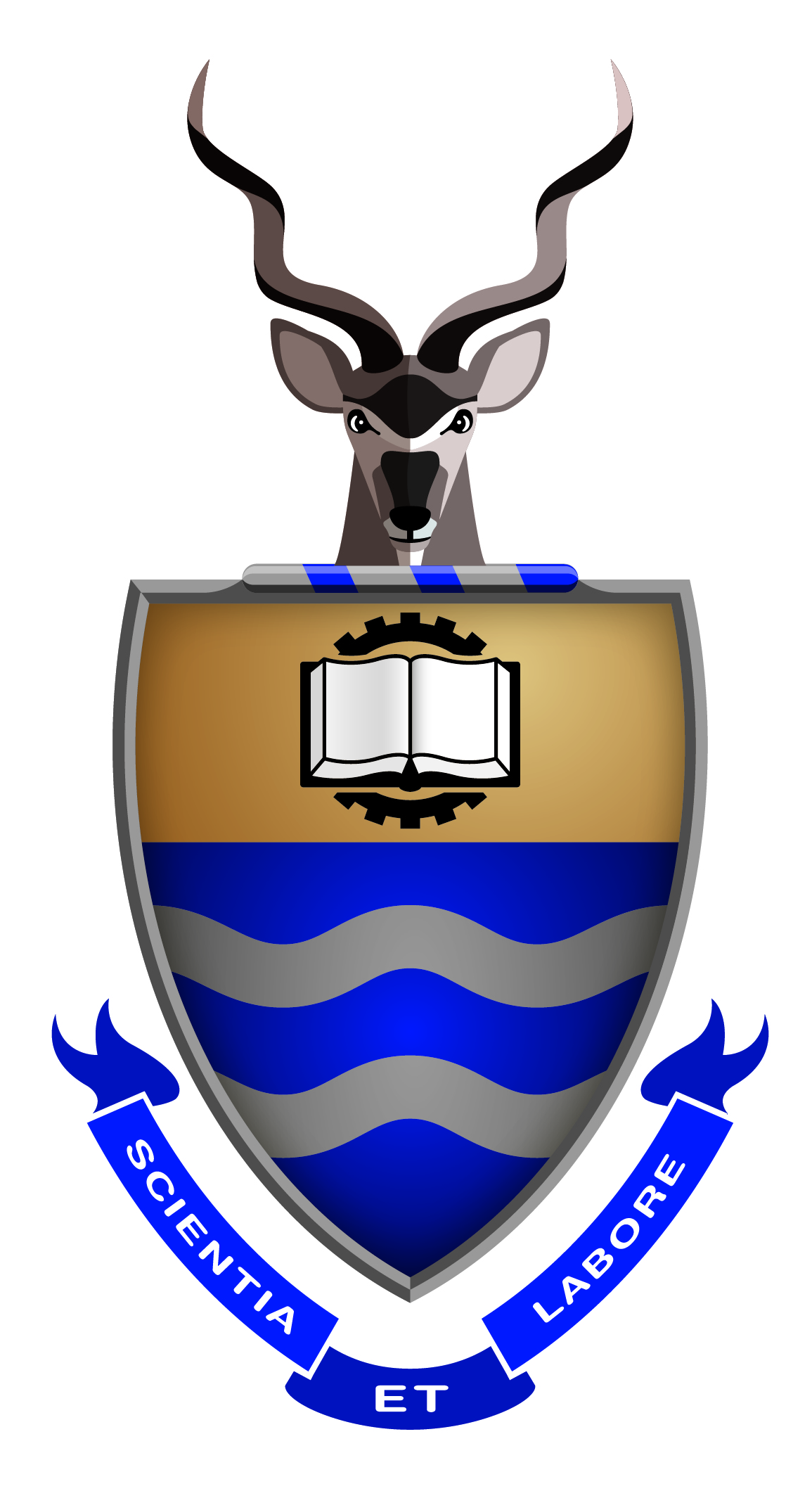
University of the Witwatersrand, Johannesburg
1993-1997
Senior Lecturer in Aerodynamics and Flight Mechanics.
My move into Academia came in 1993 when I joined the Department of Aeronautical Engineering at Wits University as a lecturer in flight mechanics and aerodynamics, filling Mark Lowenberg's very capable shoes following his move to Bristol University.
At Wits, I took over responsibility for teaching an introductory course to aeronautical engineering, as well as honours-level courses in aerodynamics and flight dynamics. It quickly became apparent to me that students were struggling deeply in trying to grasp even the most basic concepts, particularly as far as flight mechanics was concerned. The cause of the problem seemed to me simply to be the welter of symbolic mathematics that they had to absorb before being able to to anything useful with the material. This realisation was to be the origin of the highly geometric approach to teaching these subjects that I have adopted ever since. The fundamental success of this approach is that it allows students to avoid any intense mathematical manipulations until they have developed a decent qualitative understanding of the subject matter.
My research efforts were concentrated around my PhD studies, where I was endeavouring to apply advanced mathematical techniques to the analysis of fluid dynamic systems - in particular those with internal interfaces where the effects of surface tension are important. I also managed to conduct some work of a more direct aeronautical nature, in particular on developing simple models for predicting the onset of wing-rock in swept-wing aircraft, and techniques for analysing the flight mechanics of hypersonic re-entry vehicles.
It was very clear though by the mid to late 1990s that the South African aerospace industry was in steep decline, and this motivated me to cast my horizons a little further afield.
My move into Academia came in 1993 when I joined the Department of Aeronautical Engineering at Wits University as a lecturer in flight mechanics and aerodynamics, filling Mark Lowenberg's very capable shoes following his move to Bristol University.
At Wits, I took over responsibility for teaching an introductory course to aeronautical engineering, as well as honours-level courses in aerodynamics and flight dynamics. It quickly became apparent to me that students were struggling deeply in trying to grasp even the most basic concepts, particularly as far as flight mechanics was concerned. The cause of the problem seemed to me simply to be the welter of symbolic mathematics that they had to absorb before being able to to anything useful with the material. This realisation was to be the origin of the highly geometric approach to teaching these subjects that I have adopted ever since. The fundamental success of this approach is that it allows students to avoid any intense mathematical manipulations until they have developed a decent qualitative understanding of the subject matter.
My research efforts were concentrated around my PhD studies, where I was endeavouring to apply advanced mathematical techniques to the analysis of fluid dynamic systems - in particular those with internal interfaces where the effects of surface tension are important. I also managed to conduct some work of a more direct aeronautical nature, in particular on developing simple models for predicting the onset of wing-rock in swept-wing aircraft, and techniques for analysing the flight mechanics of hypersonic re-entry vehicles.
It was very clear though by the mid to late 1990s that the South African aerospace industry was in steep decline, and this motivated me to cast my horizons a little further afield.
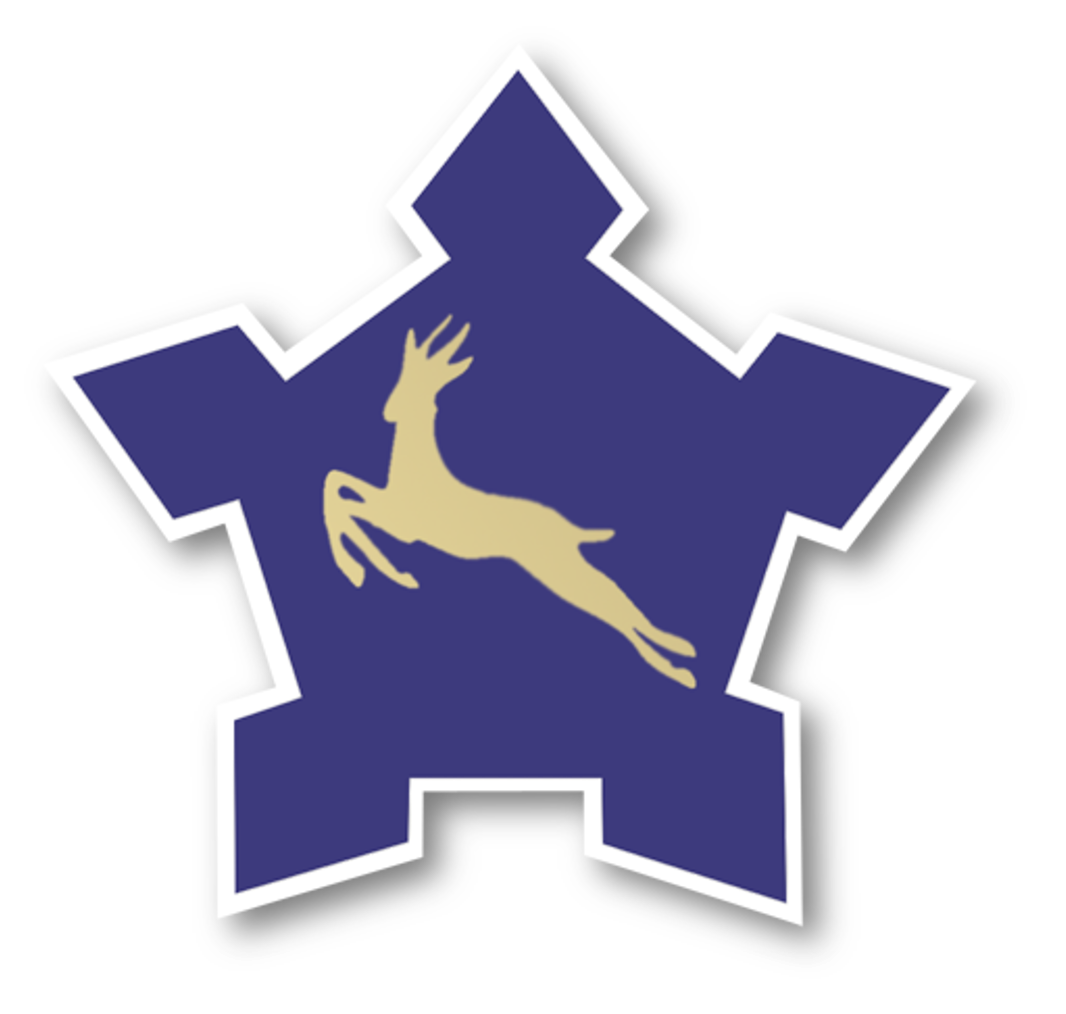
South African Air Force
1990-1991
Air Logistics Engineer.
Having a masters degree in aerospace engineering proved a distinct asset when it came to my turn to undertake my National Service in the South African military. I spent a highly educational and very busy year working at Command level within the Air Force structure, where my principal responsibility was to help coordinate and oversee the interactions between the Air force Engineering Unit and the local aviation industry.
As such I was involved in a number of projects to do with stores and systems integration into both fixed-wing and rotary-wing platforms, assisted in monitoring flight tests, helped in the analysis and design of modifications to several aircraft to improve their aerodynamic performance, and even had a brief exposure to forensic accident investigation.
Having a masters degree in aerospace engineering proved a distinct asset when it came to my turn to undertake my National Service in the South African military. I spent a highly educational and very busy year working at Command level within the Air Force structure, where my principal responsibility was to help coordinate and oversee the interactions between the Air force Engineering Unit and the local aviation industry.
As such I was involved in a number of projects to do with stores and systems integration into both fixed-wing and rotary-wing platforms, assisted in monitoring flight tests, helped in the analysis and design of modifications to several aircraft to improve their aerodynamic performance, and even had a brief exposure to forensic accident investigation.

Atlas Aircraft Corporation, Kempton Park, South Africa
1989-1993
Design Engineer.
Fresh out of my BSc (ENG) at Wits University, I started my aerospace career in earnest as a young engineer in the Fixed-Wing division of Atlas Aircraft Corporation (now Denel Aviation) leading a student team working on the preliminary design of a two-seat aerobatic trainer aircraft powered by a light turboprop engine. The aim was to develop expertise that could be fed into the selection process for a replacement for the Impala and Harvard trainer aircraft then in service with the South African Air Force.
I subsequently moved to the rotary-wing division at Atlas, shortly before the test flight of the new Rooivalk attack helicopter, where I helped support aerodynamic loads prediction at low Mach number on the fuselage of the helicopter - as well as at transonic Mach number as part of a programme to understand the performance of the blade profiles near the tips of the rotor blades. This work grew into a programme to develop a local capability to design and manufacture advanced composite rotor blades, and I was heavily involved in the coding of aerodynamic design tools, in composite layup and manufacturing, as well as in the dynamic testing of sub-scale rotor models on a new wind tunnel-mounted test rig which I helped design.
Fresh out of my BSc (ENG) at Wits University, I started my aerospace career in earnest as a young engineer in the Fixed-Wing division of Atlas Aircraft Corporation (now Denel Aviation) leading a student team working on the preliminary design of a two-seat aerobatic trainer aircraft powered by a light turboprop engine. The aim was to develop expertise that could be fed into the selection process for a replacement for the Impala and Harvard trainer aircraft then in service with the South African Air Force.
I subsequently moved to the rotary-wing division at Atlas, shortly before the test flight of the new Rooivalk attack helicopter, where I helped support aerodynamic loads prediction at low Mach number on the fuselage of the helicopter - as well as at transonic Mach number as part of a programme to understand the performance of the blade profiles near the tips of the rotor blades. This work grew into a programme to develop a local capability to design and manufacture advanced composite rotor blades, and I was heavily involved in the coding of aerodynamic design tools, in composite layup and manufacturing, as well as in the dynamic testing of sub-scale rotor models on a new wind tunnel-mounted test rig which I helped design.
© Sophrodyne Ltd 2015 - 2025


